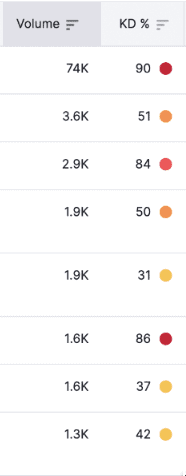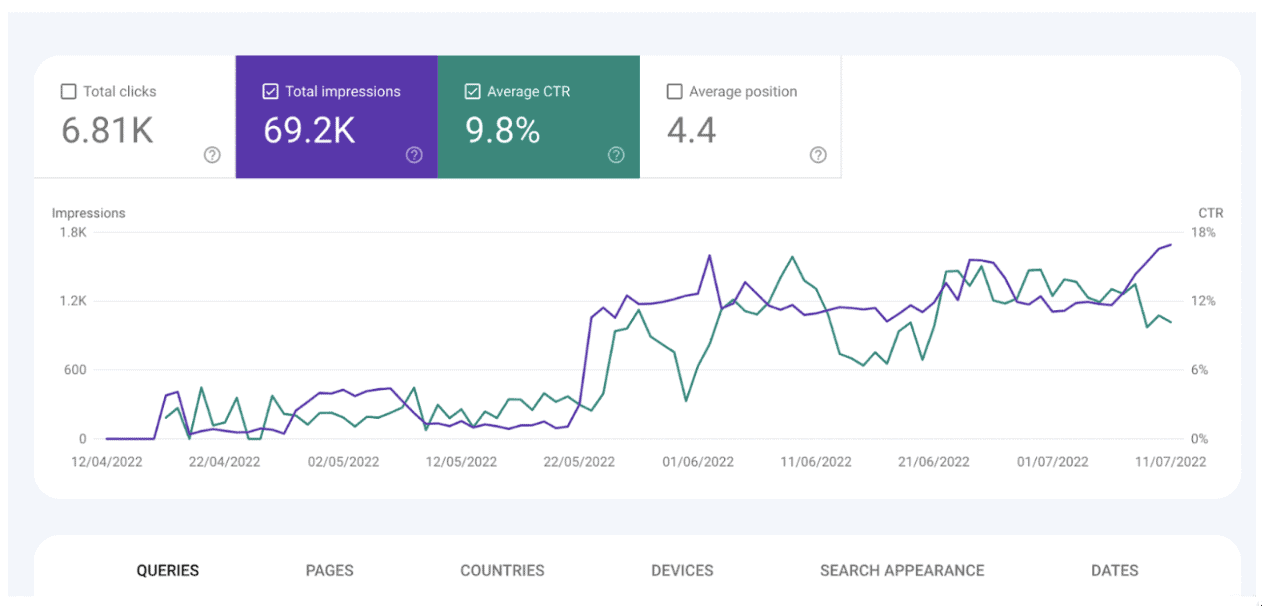Imagine a world where Google doesn’t exist.
For some people (actually, anyone who is older than 24 years old), that’s actually very possible to imagine, considering Google was only founded in 1998.
Now, imagine a world where you go onto Google, and you can’t find the answer that you are searching for. You may either conduct a new search with different words or be one of the few people brave enough to click on page 2 of the search results.
However, at the end of the day, you are going to find the result you are searching for.
This isn’t down to luck, fate, or Google being excellent mind-readers through the phone. This is because Google has a unique algorithm that is designed to understand what you are searching for and provide you with the right information.
Producing the right blog content, that is not only unique and engaging but is also in line with Google’s algorithms, and reaching the right audience, is key to ensuring that your pieces are turning up on the first page of Google.
Here is how to create and manage your content strategy like a PRO.
What Is A Content Strategy?
Not to be confused with content writing, or copywriting, a content strategy includes everything from before you put pen to paper, right down to tracking and updating all published content. It is a plan in which you use content (audio, visual, or written) to achieve your goals.
Yes, Instagram and TikTok influencers will often have a content strategy, where they plan their content for the upcoming months. But we are here to talk about the written content strategy that will appear on your blog.
One part of creating your content strategy is, of course, to write the content. But as a content strategist myself, I like to say that content writing is 10% of my job.
The planning and tracking are just as, if not more important than the content itself, as this is what will affect whether or not you are appearing on the first page of Google.
Here are 3 steps you need to take before you even start thinking about ideas for blog content.
1. Keywords, Keywords, Keywords
There’s no point in going into an Asian cafe asking for a cheeseburger and fries. Similarly, there’s no point in writing content about something, as interesting as it may seem if no one is searching for it.
But how can you know what people are searching for?
Keywords. Finding the right keywords for each piece of content that are high in search volume, and low in keyword difficulty means you are giving this piece of content the best chance at reaching page 1 on Google.
There are useful tools that can give you this information in a split second. Our company favorites are SEMrush and Ahrefs.
See below a screenshot from semrush. All the keywords are high in volume, but some will be easier to rank than others. Choosing the lower keyword difficulty, rather than just a high search volume, will give you a better chance at ranking on page 1.

2. Target The Right Audience
Next, you need to find your target audience. What is the age range you are targeting, what countries do they live in, and what are these people like? There is a big difference between creating content for teenagers, to creating content for people in their 50s.
Finding your target audience is key to setting the right tone for your pieces. Are you going down a more serious route, or are you planning on using some friendly words, or perhaps even some slang?
3. Know Your Competitors
What are your competitors publishing right now? What is their tone of voice, and what are the topics they are speaking about? Taking inspiration (not copying) from your competitors is a great way to know what Google is looking for to rank on page 1, bringing in the maximum amount of traffic.
As the old saying goes, they must be doing something right. After you’ve found your competitors, why not learn from the best, get inspired, and take your content to the next level.
6 Steps To Creating Your Blog Content Strategy From Scratch
Once you have your keywords and target audience, and you have thoroughly checked through your competitors, now it is time to start creating your blog content strategy. Here are 6 simple steps to creating your content strategy from scratch.
1. Brainstorm Ideas
Put pen to paper, quill to parchment, or fingers to keyboard.
Start brainstorming ideas, linking ideas together, and getting inspired. Keep notebooks around the house to jot down ideas even when you least expected them.
These ideas are going to be the backbone of your content strategy.
2. Create A Content Strategy Flow: From Start To Finish
This is a key step in creating your content strategy. Get the flow sorted. Who is going to do the keyword research, who will write the content brief, who will write the content, proofread the content, and even who will go online and physically upload the content with images?
Making sure everyone knows their jobs, even if one person is doing most of these, is important to a successful content strategy.
3. Set Deadlines, Guidelines, And Finish Lines
Creating a timetable for your content strategy is key.
This can be done in multiple ways, from color-coded, handwritten timetables, spreadsheets, or a workflow management software, it’s important to plan what stages of content need to be finished by certain deadlines. You may have multiple pieces going on at once that are in different stages, which also need to be reflected in your timetable.
Of course, no one is perfect, and unforeseen circumstances can lead to deadlines being delayed. But ensuring that your flow of publishing is consistent, whether it be 2 pieces a month, or pieces a week, will help keep you afloat in Google’s eyes.

Along with this, setting guidelines for content writers, especially if you are outsourcing your content writing, is important for them to understand your audience, tone of voice, and other guidelines that you want to share with them.
4. Fail To Plan, Plan To Fail
No piece of content should be written out from scratch. If you fail to plan your content pieces, plan for these pieces to fail.
What should be in a content brief plan?
- Keywords.
- Meta Titles and Meta Descriptions (that include relevant keywords).
- Suggested headings (that use the relevant keywords) in order from H2, to H4.
- An FAQ section.
- Useful links to blog pieces on competitor websites that are already ranking well.
5. Write, Review, And Review Again
Now you have your plan, it’s time to start writing. Given that you have your keywords, you know the tone of voice, you have read similar articles from the competition, and you have your headings, this shouldn’t be too difficult.
Be sure to follow the guidelines that are set out by the company, and stick to the plan unless you have good reason to change it (or it says so otherwise).
There are many different types of content that you can embed in each piece, to make it interesting, eye-catching, and worthy of being read by many. For example, including relevant images, screenshots from social media, embedding a piece of audio or a video in the piece, maps for directions, weather forecasts and more! Learn more with 50 types of content you can embed to enrich your content.
Once you have written a draft, wait 24 hours, and review it. Get someone else to proofread, and use online tools such as Grammarly to check you didn’t miss a comma or full stop.
6. Publish Your Best Piece
Now you have your piece, publish it with images (making sure that your images are not subject to copyright) and be proud of your hard work.
‘Is My Content Bringing In Relevant Traffic?’ – How To Manage Your Content Strategy
Once you have published your piece of content, this isn’t the end of the tunnel. A content strategy is only successful when you can track the data from these pieces, and optimize them regularly to keep up with the audience.
Here is how to manage your content strategy like a PRO.
Use The Google Search Console
One of the best tools to use is the Google Search Console. Here is how:
- Click on Search results.
- Make a new filter according to the page URL you are searching for.
- Search for a URL.
- Make sure your URL is the only one in the ‘pages’ section.
- Click on ‘queries’ and filter by impressions.
- Now, you can see what words and phrases are creating high impressions, but which have low clicks (meaning they aren’t used enough or correctly in the piece).
- Add these keywords to your meta title, meta description, headings, and within the content.
- Add in an FAQ (or more FAQs if you have some already) based on these high impression, low click keywords.
- Watch your content bounce back up.

Is It Worth Outsourcing Your Content Strategy?
As one of the top digital marketing agencies in Israel, here at Angora Media we aren’t strangers to starting or continuing with content strategies from businesses in every industry possible.
We have first-hand experience in bringing massive amounts of relevant traffic to our client’s websites by means of blog posts. We can plan, write, and track your content strategy from one place, letting you worry about the other aspects of your business.
If you are looking for someone to carry out everything mentioned in this article, and more (we don’t share all our secrets!) then please fill out the form here, or contact us directly to find out how we can transform your digital presence by means of content.
(Oh, and we also offer SEO, PPC, and Social Media services as well, but these will be covered in other blog posts. Stay tuned!)







